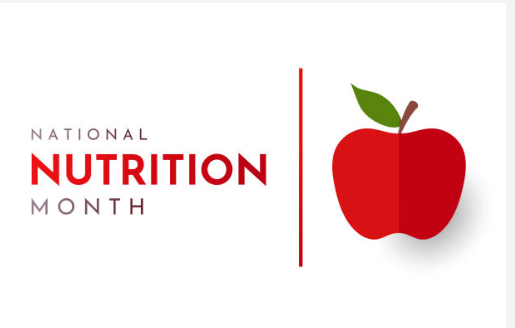March Is National Nutrition Month: Diet & Eye Health

03/2023
March is National Nutrition Month
Nutrition and Eye Health
Eating a healthy diet and leading a healthy lifestyle can have long-term effects on our eye health. SIGHT Study Principal Investigator, Lisa Hark, PhD, MBA, RD, Professor of Ophthalmic Sciences at Columbia University and a renowned medical nutritionist answers questions about nutrition and eye health. Dr. Hark also discusses her SIGHT Study at Columbia University, the Manhattan Vision Screening and Follow-up Study, that reaches adults and seniors with high rates of inadequate eye care who are at-risk for eye disease in New York City.

Lisa Hark, PhD, MBA, RD
What is the relationship between diet and eye health?
Eating healthy foods on a regular basis over many years can protect your vision and keep you and your eyes healthy. The retina in the eye has the highest rate of metabolism in the body, consuming the most oxygen and needs to be resupplied with nutrients every day. Certain nutrients called antioxidants are good for your eyes. The major antioxidant nutrients are beta-carotene, vitamin C, vitamin E, zinc, copper, and selenium. You will find these nutrients in colorful fruits and vegetables, especially those with purple, blue, red, orange, and yellow hues. Antioxidants have been shown to help the body protect against excess oxidative stress. Oxidative stress is a bodily condition that happens when your antioxidant levels are low. So try to eat at least 2 servings of vegetables with lunch and dinner every day, and a few servings of fruits as well. You can also add vegetables, such as spinach and tomatoes, to egg white omelets for breakfast or drink a shake with yogurt and kale. The more variety you have in your diet, the better.



What role can diet play in preventing visual impairment?
Visual impairment is more frequent in older adults. Eye conditions such as cataract and age-related macular degeneration (AMD) that lead to vision loss become more common as people age. Oxidative stress has been linked to both conditions, and consequently the role of nutritional factors, in particular carotenoids and micronutrient antioxidants, have been investigated as possible preventative or therapeutic strategies. Research shows that foods rich in vitamins C and E, zinc, lutein, zeaxanthin, and omega-3 fatty acids are linked to lower risk for AMD, cataract and perhaps even dry eye later in life.
What foods are high in lutein and zeaxanthin that we can incorporate into our diet?
Foods with plant pigments found in dark green leafy vegetables are high in lutein and zeaxanthin. Pigment found in the macula, the center of the retina, protect the eye from the damaging effects of blue light. Macular pigment is composed of lutein and zeaxanthin and can be increased through the diet. The highest amounts of dietary lutein are found in vegetables, such as kale, spinach, cabbage, Swiss chard, turnips, collard greens, broccoli, Brussels sprouts, and zucchini.
Why is fish so good for your eyes?
Certain high fat fish, such as salmon, mackerel sardines, tuna, and herring contain high amounts omega-3-fatty acids, which is important for your brain and eyes. The highest amount of these fats in the body are found in the brain and eyes, and the body does not make omega-3 fatty acids. Omega-3 fatty acids function in the body by providing structure to the retinal photoreceptors, and by protecting ocular cells against light, oxygen, and damage to the eyes. It is best to eat baked, grilled, broiled fish at least 1-2 times per week. Nuts, such, as walnuts, almonds, and hazelnuts, are also a good source of these healthy fats.
What is your SIGHT Study doing for older adults who are at risk of vision loss due to age-related eye conditions?
Age-related vision loss associated with conditions such as AMD or cataract can be devastating for people. Blurry vision can affect their quality of life and also increases their chances of falling. Some are not able to travel to get the eye care they need. Our SIGHT Study, is collaborating with New York City Housing Authority (NYCHA) who provides affordable housing for low- and moderate-income residents in New York City and the Department for the Aging who provides daily meals at senior centers. We provide eye health screenings and eye exams in community rooms and senior centers within NYCHA developments. The goal of our 5-year study is to improve access to eye care for underserved communities and determine if vision screening where people live improves the detection and management of vision impairment and eye diseases.

SIGHT Study Team at Columbia University
Lisa Hark, Desiree Henriquez, Stefania Maruri, Alexa Kaminsky, Jacqueline Wright, and Rachel Wint


